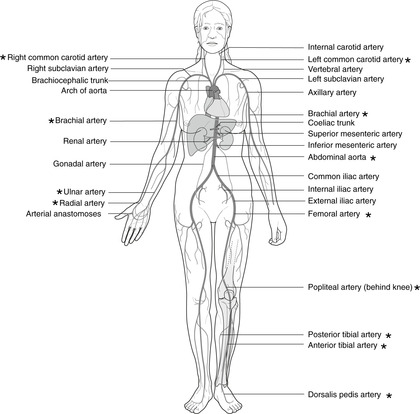Heart43
7.1. Heart
7.2. Arteries (Fig. 7.1)
![]()
Stay updated, free articles. Join our Telegram channel

Full access? Get Clinical Tree


Cardiovascular system and lymph vessels
7.2 Arteries43
7.3 Veins43
7.4 Lymph vessels (lymphatics)45
The cardiovascular system consists of a series of closed blood vessels lined by endothelial cells, and a pump: the heart. Arteries may be described as: systemic, taking blood from the left ventricle of the heart to the tissues of the body; and pulmonary, taking blood from the right ventricle to the lungs. Veins may be described as: systemic, conveying blood towards the right atrium of the heart from all tissues of the body except the intestines; pulmonary, conveying blood from the lungs to the left atrium of the heart; and hepatic portal, conveying blood from the intestinal bed to the liver. The lymphatic system conveys tissue fluid back to the venous system: it is important in the spread of disease.
You should:
• describe the basic structure of the arterial system
• describe the basic structure of the venous system.
• list the names of the most commonly palpated arterial pulses
• explain the meaning of: systemic, pulmonary, portal
• describe the clinical importance of the lymphatic system and the positions of the most commonly palpated groups of lymph nodes.
The heart is in the thorax and consists of two pumps, right and left, lying side by side in one organ. The left heart (left atrium and left ventricle) receives oxygenated blood from the lungs and pumps it around the body, and the right heart (right atrium and right ventricle) receives deoxygenated blood from the body and pumps it to the lungs for oxygenation. It is described in Chapter 10.
Arteries convey blood from the heart to the tissues. There are two arterial systems:
• the aorta and its branches – systemic arteries – which convey blood from the left ventricle to the capillary beds; and
• pulmonary arteries, which convey deoxygenated blood from the right ventricle to the lungs.

